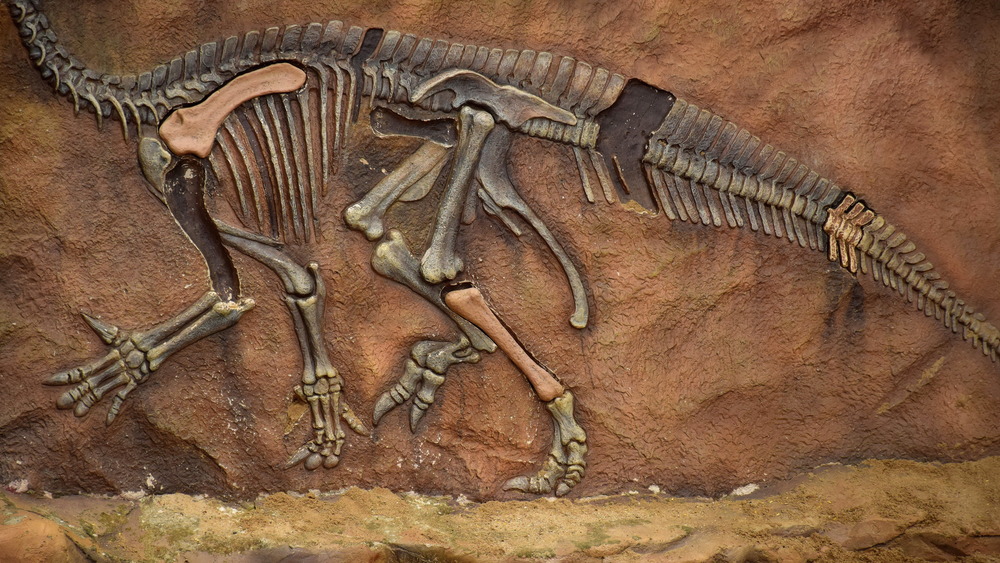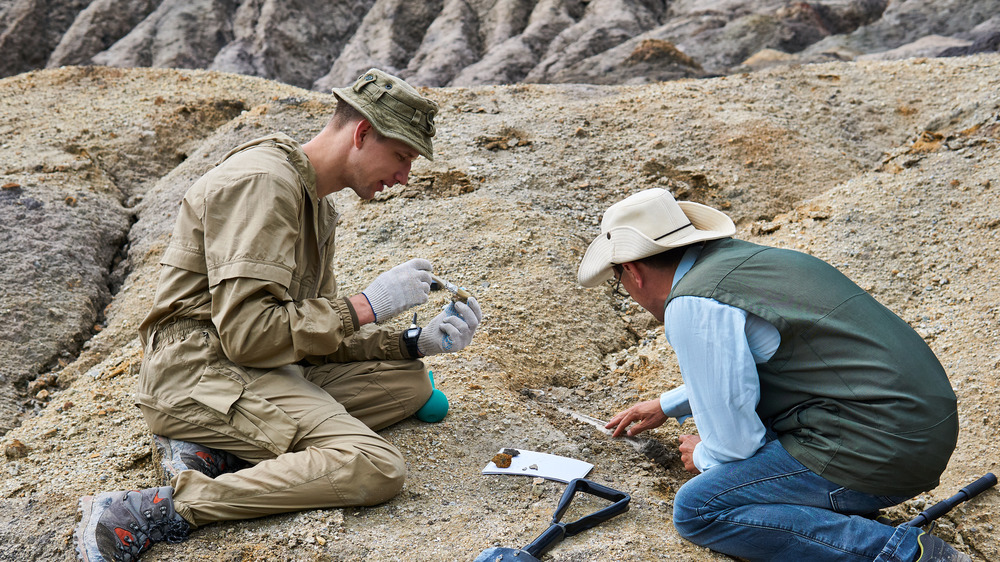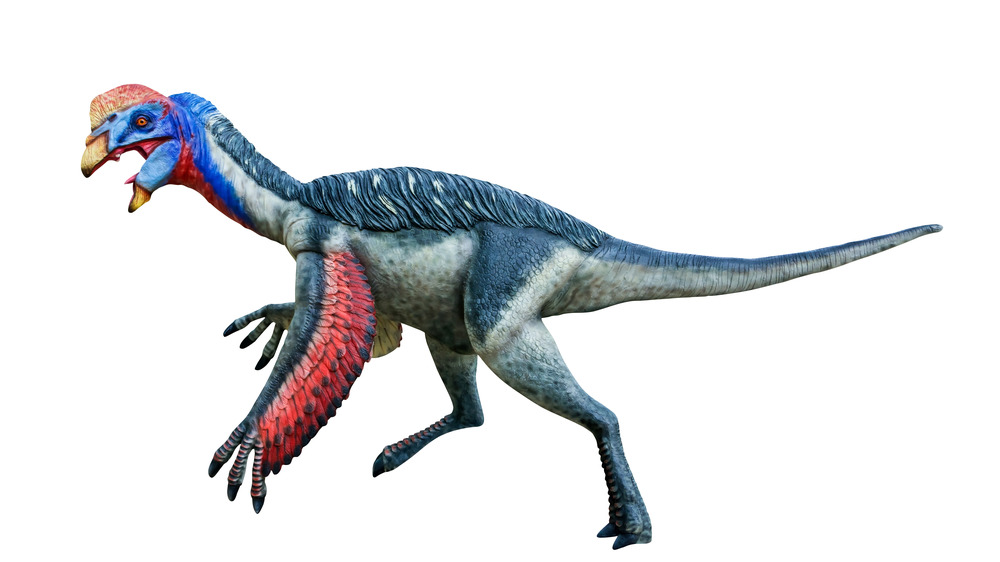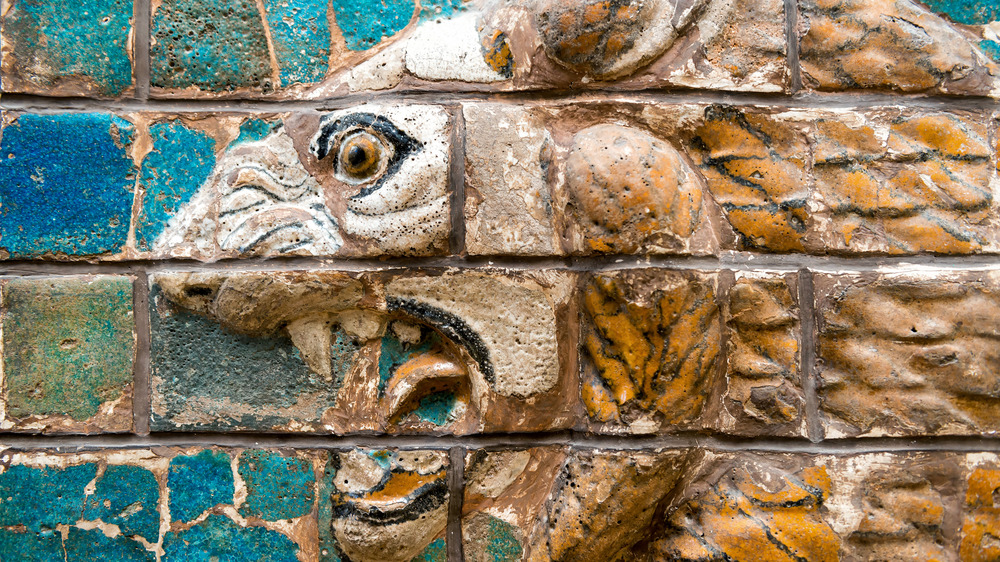The Extinct Feathered Creature That Was Named After A Demon
Humans have been inventing monsters for as long as we've been around. Things like demons, dragons, ghouls, and ghosts seem to be carried in our DNA. Some of these monster stories date back to ancient times, long before the invention of written language, passed down through oral traditions, from myth and indigenous religions. Most of these devilish creatures have turned out to be nothing but fantasy, while others seem to have roots in the real world. Creatures like dragons resemble large birds of prey, or giant lizards that can easily take down an adult. Serpent beasts of legend are no less deadly than the giant anacondas of the Amazon. And, of course, the prehistoric creatures that roamed the world millions of years before humans stoked our imaginations, sending most of us running in fear (if we weren't caught and eaten first).
Somewhere, housed inside the walls of Carnegie Museum of Natural History in Pittsburgh and the Marmath Research Foundation in South Dakota, lay the bones of a creature that, to humans, would've looked nothing short of horrific. The stuff of nightmares. Luckily, it died out tens of millions of years ago. We're talking about the demon "bird," Anzu wyliei.
Discovering an ancient monster
The fossilized remains of the first two specimens of this new species of dinosaur, Anzu wyliei, were discovered by private collectors in the fossil-rich Hell Creek Formation in South Dakota, and are the first known specimens of the type, according to Smithsonian. In the overall scheme of things. these two sets of fossils were merely partial skeletons that didn't amount to much more than bits of bones. It was the third fossil, unearthed in the late '90s, that was nearly complete and provided some important discoveries in paleontological science.
The creature is part of the Oviraptoridae family that roamed the Asian and American continents over 60 million years ago. With the discovery of Anzu, scientists have been able to fill in evolutionary gaps within the Oviraptorid evolutionary tree, which might not seem too exciting to someone who isn't really into dinosaurs, but in the world of paleontology, this is a big deal. American oviraptorosaurs aren't found very often, unlike their Asian counterparts, reports National Geographic, and each fossil sheds a little more light into what our world looked like back in the Cretaceous period.
Having a nearly complete skeleton of Anzu has allowed researchers to paint an image of what the creature most likely ate, where it lived, and how it looked. And, honestly, this thing looked terrifying, which is probably why it's been nicknamed "The Chicken from Hell."
The Chicken from Hell
Imagine, if you will, a dinosaur that walks on two legs and stands around twice the height of a human being. Now give it a razor-sharp beak. The legs are reminiscent of the flightless birds we see today, according to National Geographic – think ostrich. They're long, slender, fast, and powerful. This bird, though, isn't quite a bird yet; Matt Lamanna, a paleontologist from the Carnegie Museum of Natural History, once called the Anzu "as close as you can get to a bird without being a bird." Sure, most people don't find the birds of today to be terrifying monsters, but that's because for the most part, they're much smaller than we are. If you imagine yourself as a rabbit being taken down by a hawk, you'd change your mind.
The creature, according to Smithsonian, was covered in feathers, much like today's birds, but it had some distinct dinosaur characteristics. For one, it had a tail. It wasn't a long tail, but it was there. Then come the arms. Here's where this almost-bird gets even more wicked. This creature's arms, much like its legs, were long and slender. The hands, as National Geographic describes, are broad, while the fingers are tipped with curved claws so it can grapple with smaller animals and shove them through that cutting beak. The animal is believed to have been an omnivore, so many unsuspecting creatures probably met their ends to those claws and beaks.
A Mesopotamian demon
The scientific name for this "Chicken from Hell," Anzu wyliei, has interesting origins. "Wyliei" comes from the grandson of someone who donated a bunch of money to the Carnegie Museum, according to National Geographic. "Anzu," on the other hand, is the name of an ancient Mesopotamian demon. It kind of resembles the newly discovered dinosaur, but only very, very loosely. Like, they're both kind of birds, and that's pretty much it.
In mythology, the Anzu demon is a wild creature that's part lion and part bird, similar to the griffin of European mythology. According to the Open Richly Annotated Cuneiform Corpus project that studies Mesopotamian cuneiform, Anzu is a beast that can be tamed by the gods as a sort battle pet, if you will — a divine Pokemon. It's been shown on ancient tablets locked in battle with gods, so the thing is clearly powerful. They're winged and feathered, but the stone images of these fearsome beasts tend to show them as quadrupedal. There are some similarities with the Anzu dinosaur, one being inhuman power. Honestly, we wouldn't mess with either of these monsters.



